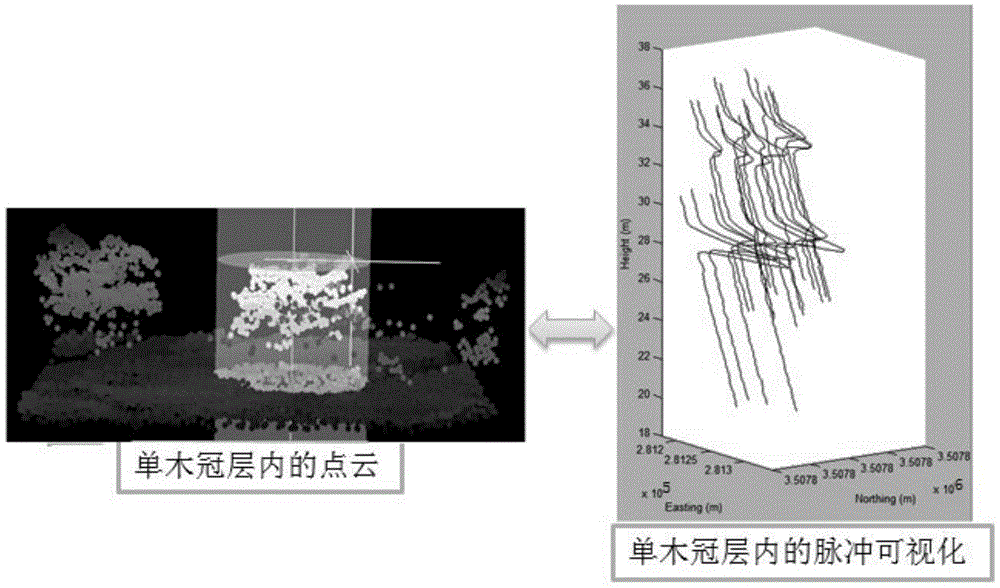A Single Tree Recognition Method Based on Integrated Features of Lidar Waveform
A technology of comprehensive features and identification methods, applied in the fields of electromagnetic wave re-radiation, radio wave measurement system, utilization of re-radiation, etc., can solve problems such as low classification accuracy, failure to fully mine LiDAR data, combination of geometry and energy information, etc. To achieve the effect of improving the overall accuracy
- Summary
- Abstract
- Description
- Claims
- Application Information
AI Technical Summary
Problems solved by technology
Method used
Image
Examples
Embodiment 1
[0053] A single tree identification method based on integrated features of LiDAR waveforms, taking the classification of tree species in a northern subtropical natural secondary mixed forest as the main forest type as an example. The forest area is 20-261m above sea level and covers an area of about 1100 hectares. The main tree species are the needle-leaved masson pine (Pinus massoniana), fir (Cunninghamia lanceolata) and slash pine (Pinuselliottii), and the broad-leaved oak (Quercus acutissima), sweetgum (Liquidambar formosana) and holly (Ilex chinensis). In the forest area, 12 square sample plots (30×30m) were arranged according to the composition of tree species, forest age, and site conditions. In each sample plot, individual tree species were manually identified, and forest parameters such as diameter at breast height, tree height, and crown width were measured. The center of the sample plot was positioned by differential GPS, and the relative position of each tree (tha...
PUM
 Login to View More
Login to View More Abstract
Description
Claims
Application Information
 Login to View More
Login to View More - R&D
- Intellectual Property
- Life Sciences
- Materials
- Tech Scout
- Unparalleled Data Quality
- Higher Quality Content
- 60% Fewer Hallucinations
Browse by: Latest US Patents, China's latest patents, Technical Efficacy Thesaurus, Application Domain, Technology Topic, Popular Technical Reports.
© 2025 PatSnap. All rights reserved.Legal|Privacy policy|Modern Slavery Act Transparency Statement|Sitemap|About US| Contact US: help@patsnap.com



